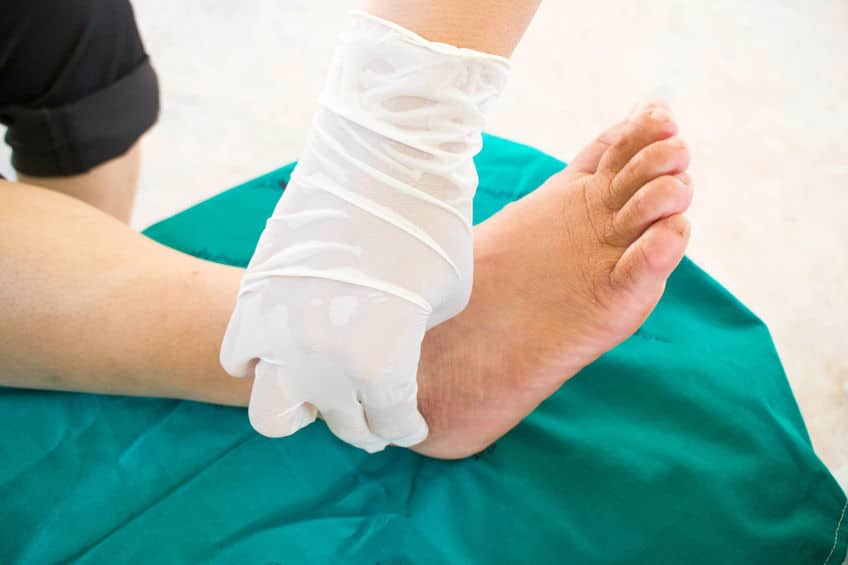The Diagnosis of Charcot (Neuroarthropathy) Diabetic Foot

Charcot arthropathy is the destruction of the bones and joints of the foot and ankle from long-standing diabetes. It is irreversible and too often results in amputation.
There are a lot of diabetics in Louisiana; they are both diagnosed and undiagnosed. Charcot arthropathy occurs after about ten years or so of no treatment or under-treatment. If one has diabetes, but never actually had it diagnosed, then it will be untreated, and Charcot can occur. Similarly, if one has under-treatment and is not optimized, then Charcot can happen as well.
In order to prevent disability and/or amputation, it is necessary to recognize a Charcot foot early. With that recognition must come treatment. It is thought that Charcot results from repetitive trauma to a neuropathic (insensate) foot over time. Half of patients will recall an injury to the foot that caused the problem, but half will not. Minor trauma can cause a neuropathic foot to develop Charcot’s Arthropathy; even a small torque on the foot from errant gravel can do it. That being said, trauma is not mandatory to begin the cycle of fracturing.
“Charcot Arthropathy will present with signs of inflammation. The foot will be large, swollen, red and warm. It may be deformed.”
It is often misdiagnosed as infection or osteomyelitis. A red, hot and swollen foot with a standard white count and no fever is most likely Charcot. If there is doubt, as with feet with small ulcers or puncture wounds, a simple test can help. If the swelling and redness go away after 10 minutes of elevation, it is more likely to be Charcot. If not, suspect infection. One can have both of course. If there is an actual ulcer, probing can help. If a probe (sterile medical Q-tip) can touch bone through the ulcer, there is a 65% chance the bone is infected. For difficult cases, advanced imaging techniques will be necessary to distinguish Charcot from infection.
“Neuropathy is an absence of normal sensation. A patient may not feel pinpricks, light touch or vibration.”
Your foot doctor or surgeon should have a medical-grade filament to test ‘protective sensation’ in the office. Neuropathy is a hallmark of Charcot. X-rays help a great deal for the diagnosis of Charcot. An experienced surgeon will be able to identify a neuropathic and arthropathic foot immediately. Certain regions of the foot are affected in certain manners. X-rays are also useful for the treating Charcot surgeon to evaluate stability and disease over time. We typically follow a patient for life with serial X-rays to make sure the problem does not progress. In addition, we recommend that a patient get new X-rays anytime there is even the smallest twist, crush or fall involving the foot/ankle region.
Bloodwork can help in the diagnosis and management of Charcot Arthropathy. We try to coordinate care with the endocrinologist and primary care physician about laboratory testing.
If you have diabetes and have for a while, you are at risk of this problem. If at any point, with or without trauma, you develop a swollen, red, warm foot you should be evaluated for Charcot. Only 50% of patients will have pain, so do not wait until you hurt to seek care. An experienced Charcot surgeon should see you, and that surgeon should know who the other members of your diabetes care team are.
FOR MORE INFORMATION ABOUT CHARCOT FOOT TREATMENTS, CONTACT WARNER ORTHOPEDICS & WELLNESS TODAY!
ABOUT THE AUTHOR
Dr. Meredith Warner is a board certified, Fellowship Trained Foot and Ankle, Orthopedic surgeon practicing in Baton Rouge, Louisiana. Dr. Warner is committed to offering her patients an accurate diagnosis along with a comprehensive treatment plan in order to get them back to a pain-free life. Dr. Meredith Warner specializes in the treatment of orthopedic issues, providing operative and non-operative treatment plans of orthopedic problems, including musculoskeletal pain such as chronic back, neck and foot pain, reconstructive surgery of the foot and ankle, arthritis, diabetic, hammer toe, bunion, wound care, work injuries, fitness and nutrition and osteoporosis issues.





